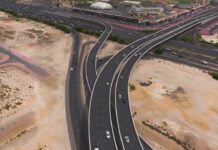By Samir Salama, Associate Editor www.gulfnews.com
Abu Dhabi: The Abu Dhabi Department of Transport has started work on the design of a Metro and light-rail transit system after the Executive Council approved funding for the projects, a spokesman for the department said.
The Abu Dhabi Metro, which will extend approximately 131 km and be supported by tram and bus feeder networks, is set to be operational by 2016-17.
Future goals
Besides serving the projected increase in the capital’s population and relieving congestion, the Metro will mainly connect the proposed Central Business District with Sowwah Island, Reem Island, Saadiyat Island, Yas Island, Abu Dhabi International Airport and Masdar, the Capital City District, Emerald Gateway, Zayed Sports City and Adnec.

According to the spokesman, 18 km of the Metro lines and 40 km of the light-rail transit system will be designed in the first phase of the project.
Most of the proposed network is expected to be underground. A fully grade separated rail line will serve Central Station, North Island, Al Wahda, Adnec, and Zayed Sports City.
The monorail track (which is part of the Metro project) is expected to be 40km long. Each station is expected to handle 1,000 commuters. The monorail might also include 15 two-coach trains at five-minute intervals between service trains.
The Abu Dhabi Metro would be linked to the Dubai Metro and other cities in the UAE and to other GCC states.
Cost
The Department of Transport estimated the annual cost of time spent in congested traffic in the capital at Dh2.5 billion by 2015, which is expected to increase to Dh5.9 billion by 2030. More info



















